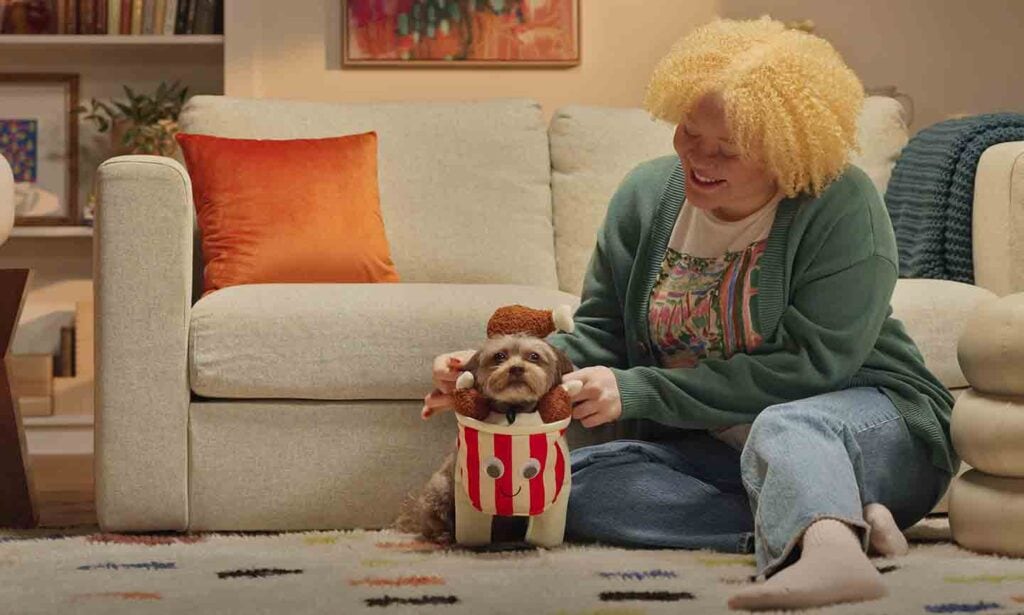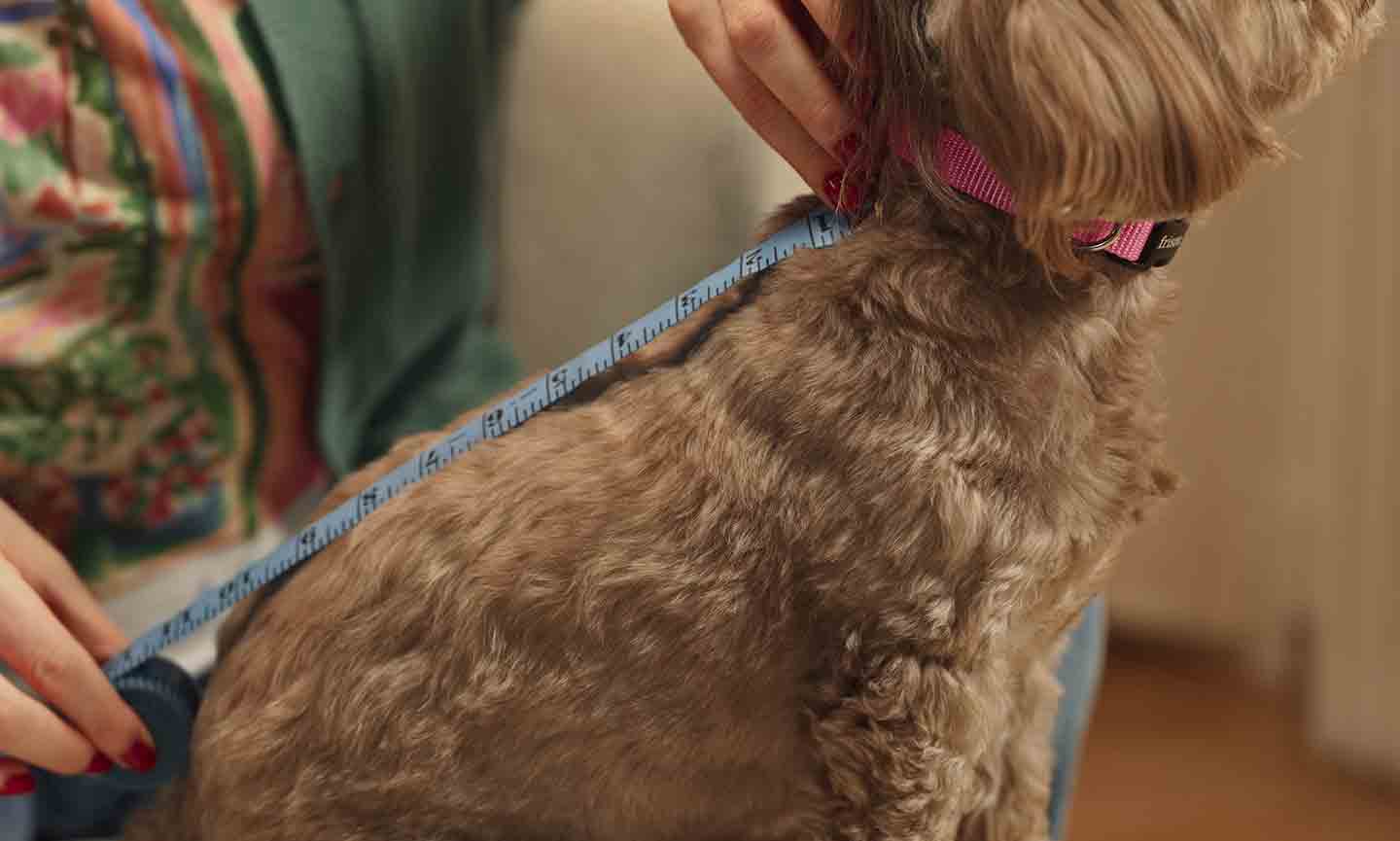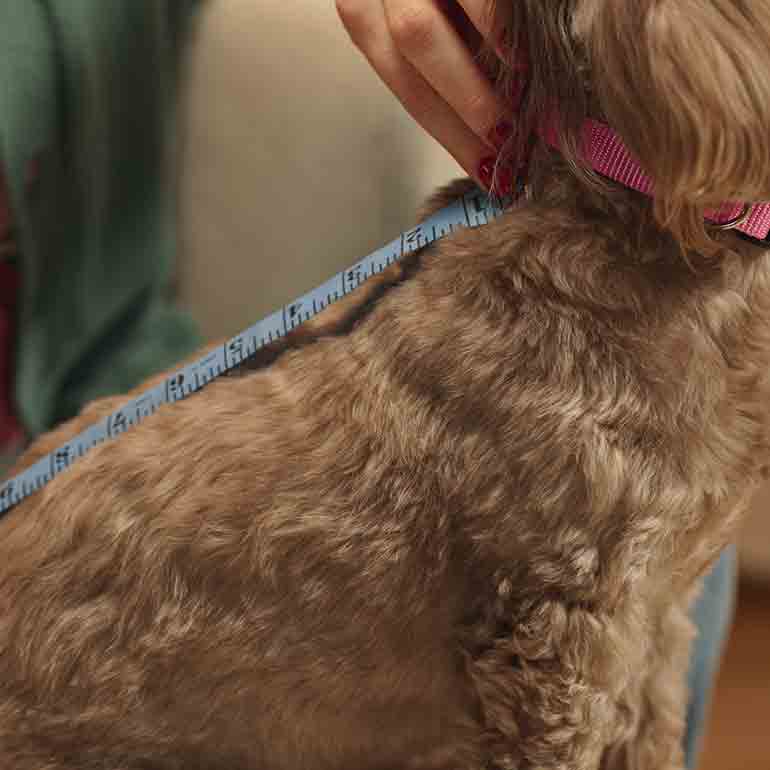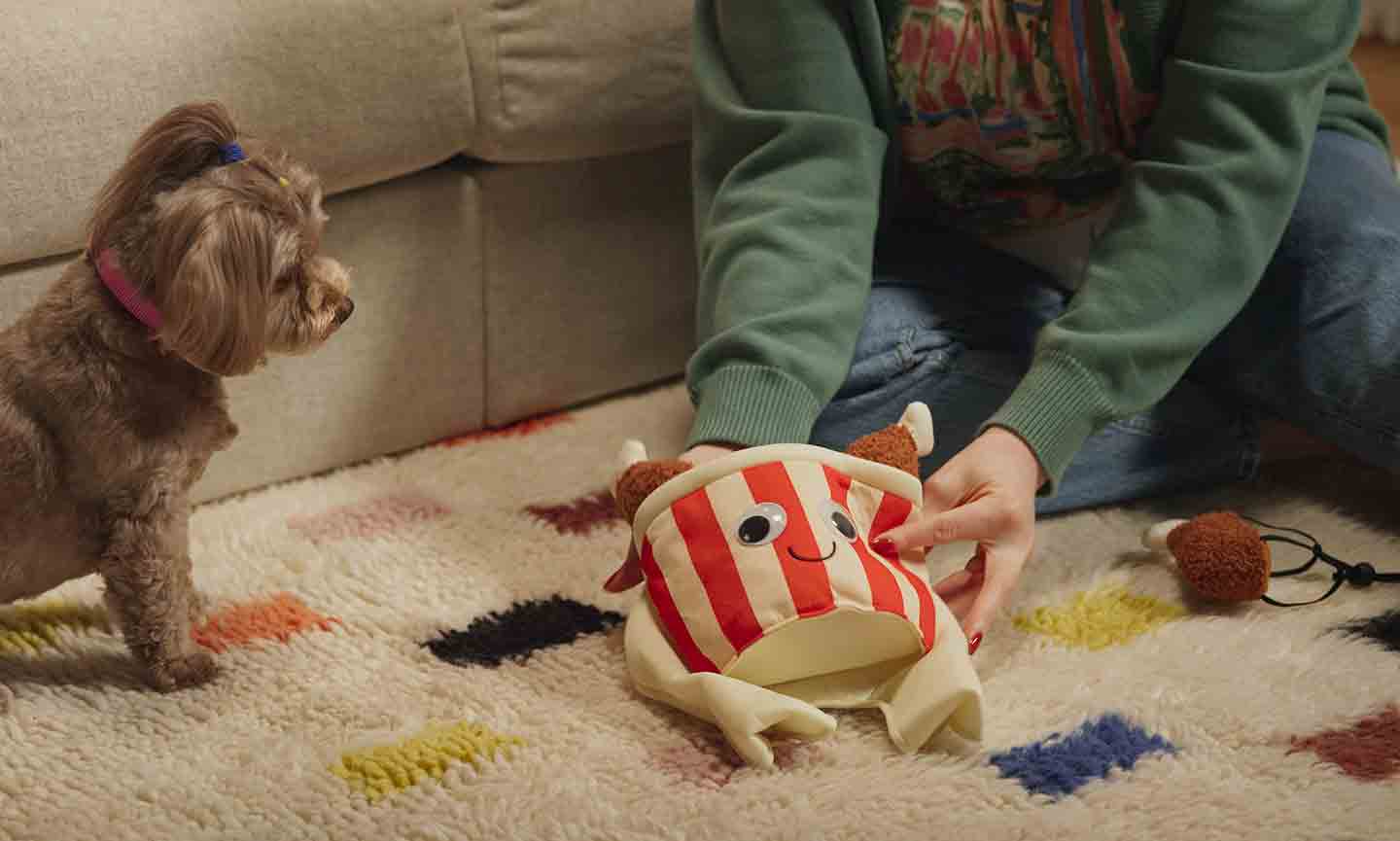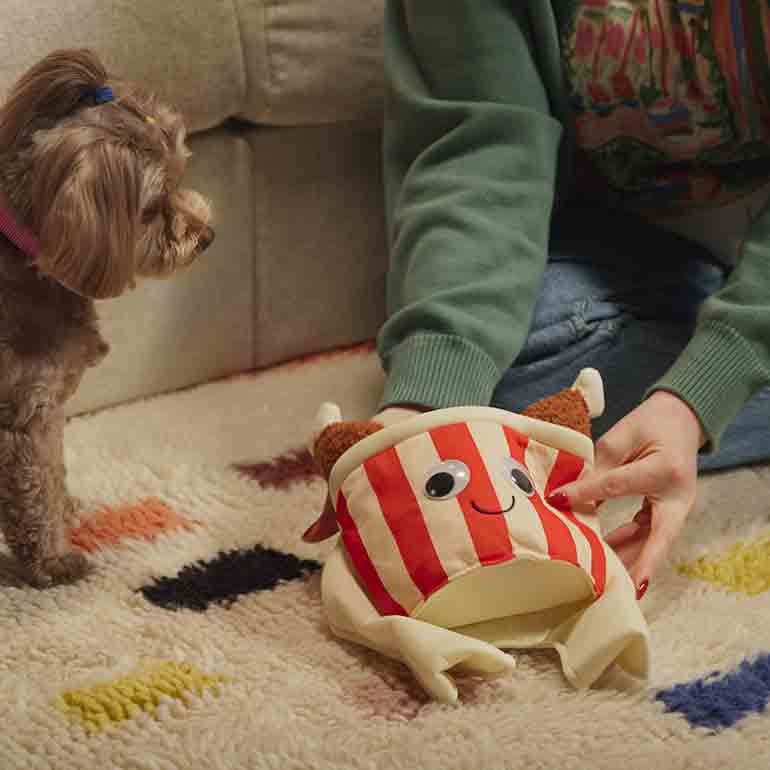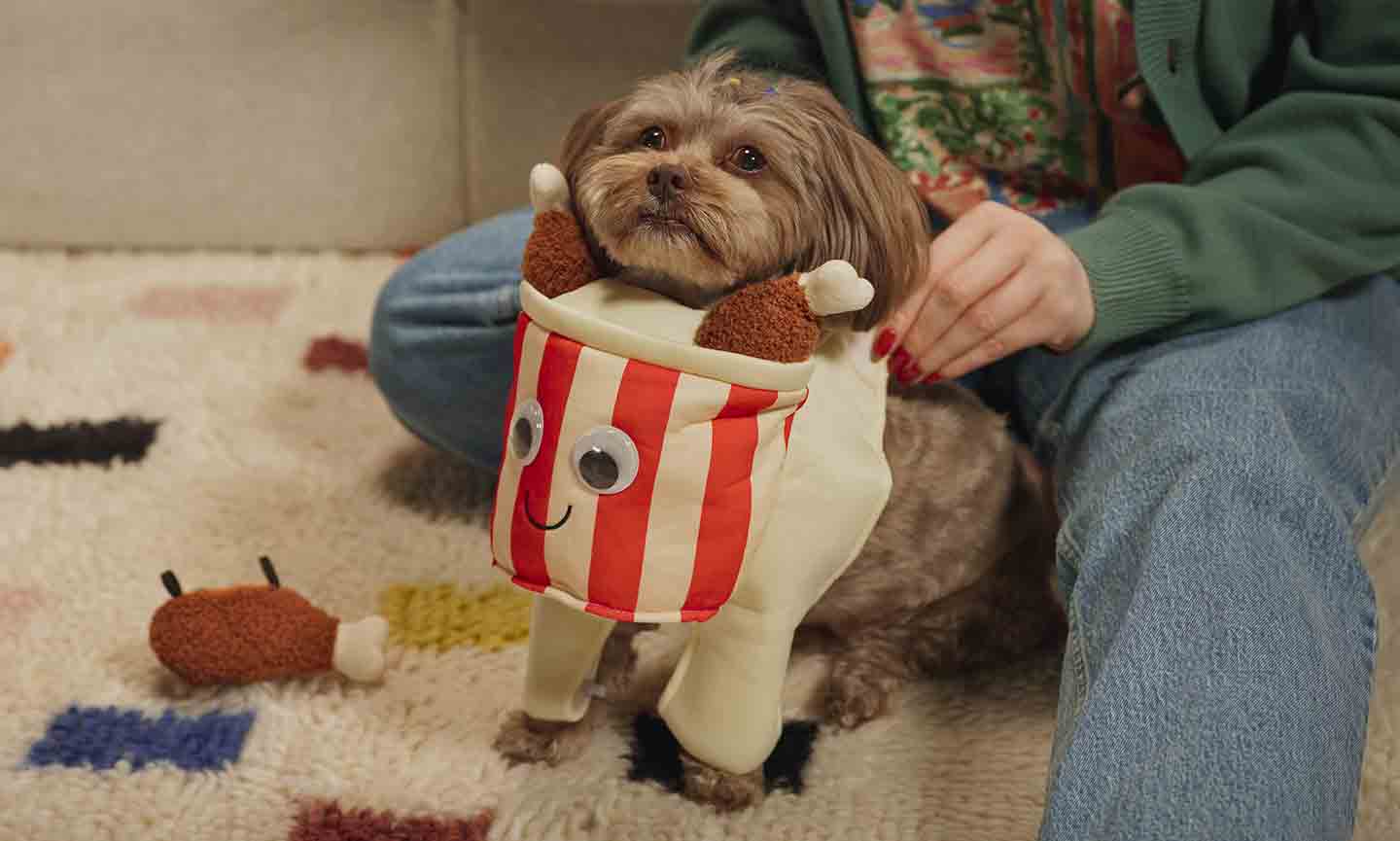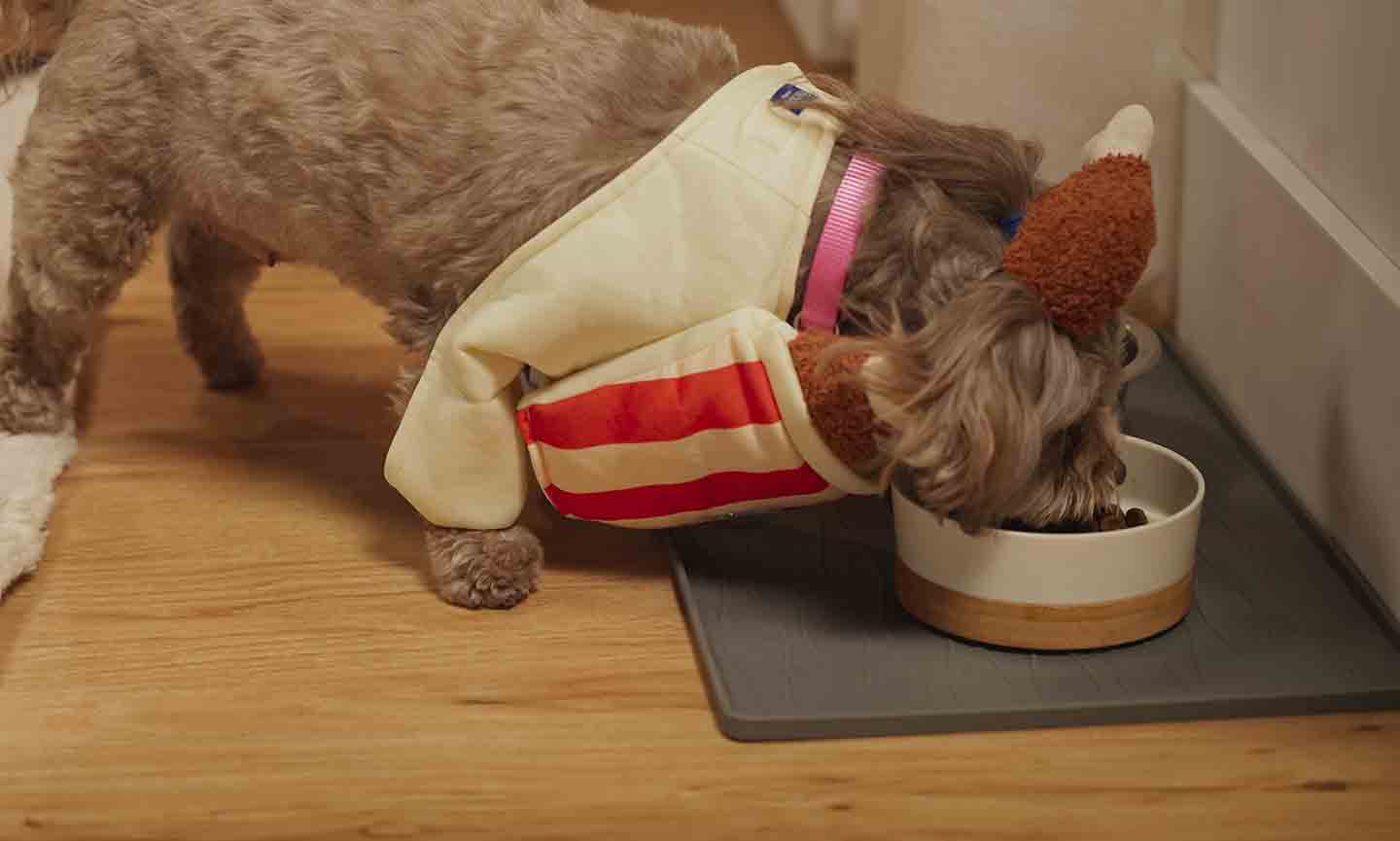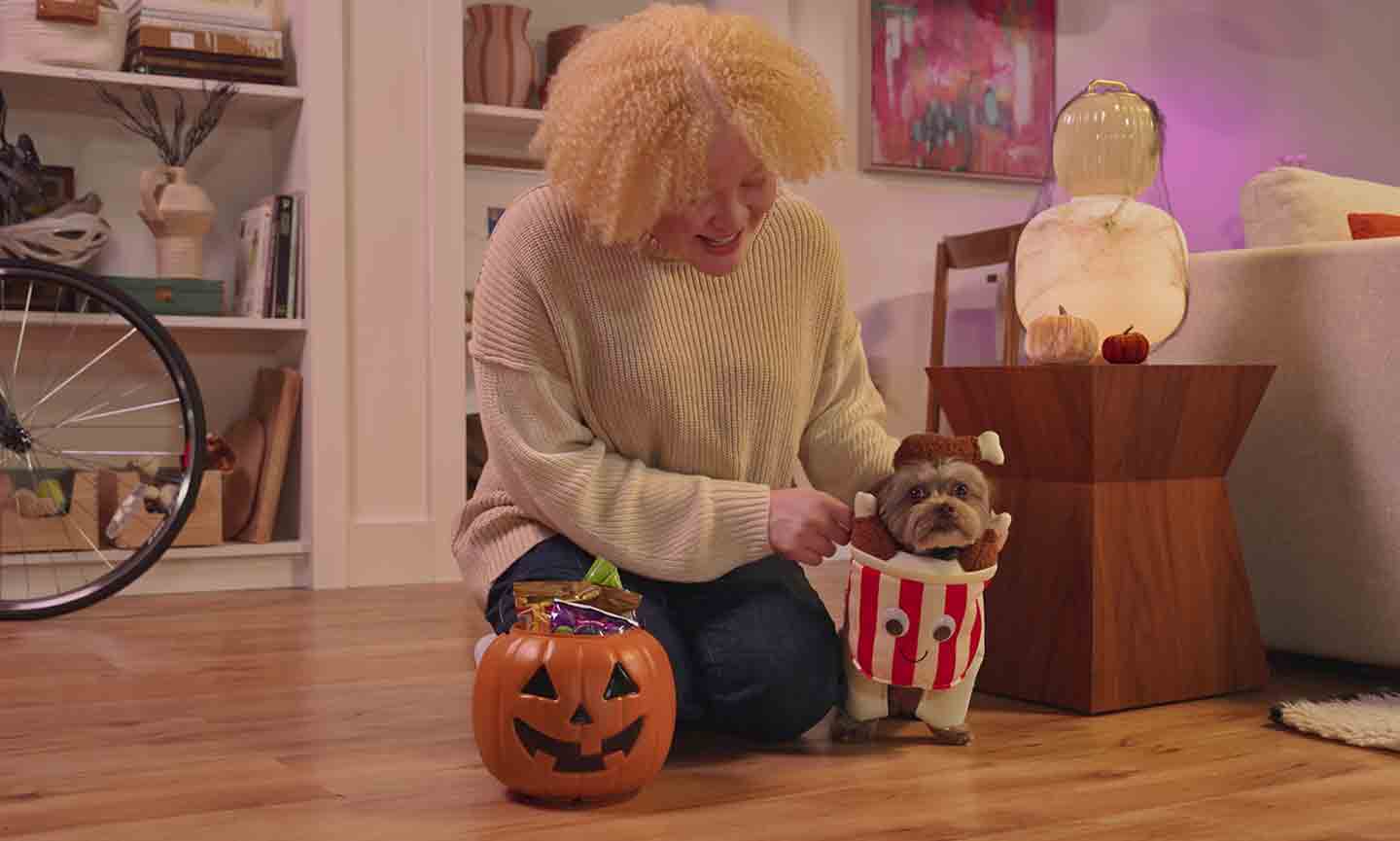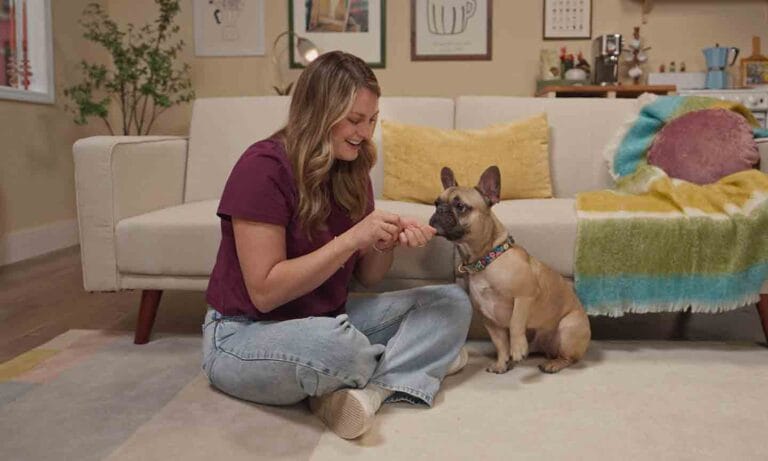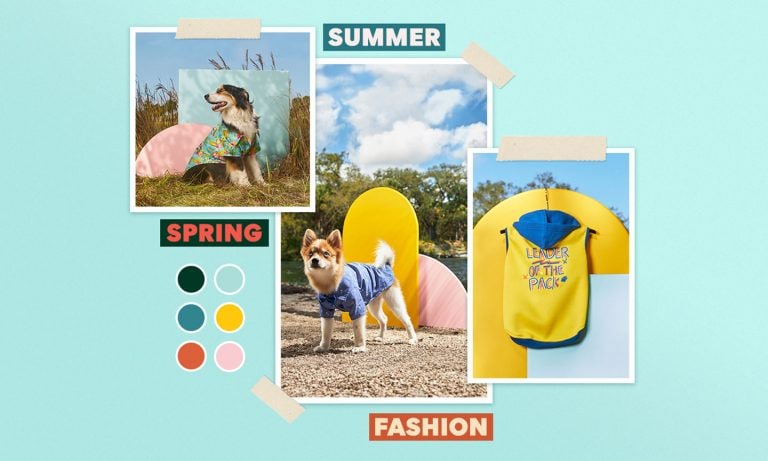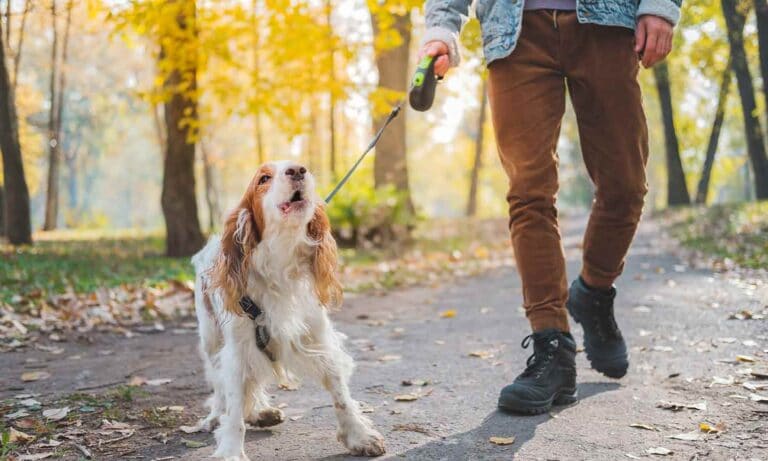In This Guide
How To Train Your Dog To Wear Clothes or Costumes
We can all agree that no photo op is worth stressing out your furry friend, right? So it’s important to slowly acclimate your dog to any apparel you’d like them to wear. In other words, we don’t recommend just tugging a shirt or dress over their furry little bodies and calling it a day. You’ve got to take your time, watch their body language and, above all, respect their comfort level.
Consider your pet’s general tolerance of being handled and past experiences wearing clothes (if you’ve tried this before). Not every dog enjoys wearing costumes or can be trained to do so, and it’s not ideal to force it. In this case, you can opt for something simple, like a cute themed collar or bandana.
Think your dog's ready for a style upgrade? For a step-by-step guide on putting clothes on dogs, we spoke with Shelby Semel, CPDT-KA, a professional dog trainer and canine behavior expert based in New York City.
1Measure Your Pup
Measure your dog for clothing to ensure a comfortable fit before purchasing. You want to make sure the clothes fit properly and cannot get caught on anything. Check out our guides to measuring dogs for clothes and costumes, and measuring dogs for shoes.
2Slowly Introduce the Item
Introduce the item to them, especially if it’s unusual like a headpiece or booties. Semel explains that you want to slowly desensitize your dog to wearing the item in advance, using tactics like:
- Showing your dog the apparel so they can examine it and smell it
- Placing the item next to them so they get used to its presence
- Letting them interact with it
Let your dog explore the clothing at their own pace, and only move on to the next step when they seem comfortable touching it and having it near them.
3Slowly and Gently Put the Costume On
Slowly put the garment and accessories on, and use some tasty treats along the way. If your dog’s not feeling it, don’t force it, Semel says. Instead, try again another day by repeating the same.
Back off and try again later if you see common signs of discomfort and anxiety in dogs, including:
- Lip licking
- Head turning
- Tail tucked
- Stillness
- Running away
- Growling
- Barking
If your dog ends up allowing you to put the garment on them, success. If not, you may need to default to a simpler accessory like a collar.
4Practice Wearing the Garment for Short Periods
Once you’ve got the garment on them, have them wear it during mealtime or playtime—times when your dog is likely to be distracted from this funny new thing on their body. Take it off right afterward. Keep practicing, gradually increasing the amount of time they’re in the garment while monitoring for signs of stress or discomfort.
5Wear It Out!
On the day you want your dog to wear the clothing, accessory or costume, put it on them as you’ve practiced before and reward them with a treat. By this point, they should be fully comfortable wearing the clothing item. Semel recommends being on the lookout for signs they’re ready to take the garment off and remove it as needed.
Do Dogs Need Clothes?
Many pups don’t need clothes, but some can benefit from wearing certain garments. For example, small dogs or hairless dogs who find it difficult to stay warm can benefit from a cozy sweater or vest, especially when they need to go outside to do their business. Shoes can also be beneficial to dogs, protecting their feet from rain, snow and hot sidewalks.
How To Find the Perfect Clothes and Costumes for Your Pup
Keep these features in mind as you shop for dog clothes:
- Fit matters: Make sure you’ve properly measured your dog, and have them in the correct size of clothing or shoes. Items that are too small can feel restrictive, while items that are too loose can catch on objects, leading to potential injuries or accidents.
- Easy on/off: Look for garments that are simple to put on and remove, says Jack Vandever, a dog garment and shoe expert for Chewy/Frisco. Consider adjustable straps, Velcro closures, stretchy fabric, snap buttons, wide neck openings and zippers with guards.
- Pet comfort: When the apparel is just about being cute, Vandever says to put comfort high on the list. “I would describe it as both soft materials and a high-quality fit,” he says. “Most apparel is shaped for an average dog, so there is where adjustability also comes in handy when you have a dog who is extra long, extra short, short-legged or barrel chested.”
- Water resistance: If you live in an area where it often rains or snows, look for water-resistant garments for your dog.
- Reflective materials: Those who take their pups on night walks should consider choosing garments with reflective materials. This makes your pet more visible, which improves safety.
- Cooling material: Vandever says to consider cooling apparel for your pup, especially if you live in a hot climate. These are garments made with mesh fabrics to both keep the dog cool and protect against the sun.
FAQs About Dog Clothes
Q:Is it bad for dogs to wear clothes?
A:No, it’s not bad for dogs to wear clothes. For some pups, like those who are small or hairless, clothing provides comfort and warmth. Some apparel is also designed to protect from the elements, such as rain, snow, sun and heat.
Q:Can dogs wear clothes to sleep?
A:Most dogs don’t require an extra layer of clothing at bedtime. If your pup tends to stay cold, pajamas may help them feel warmer and perhaps sleep more comfortably. Anxiety compression vests may be helpful for some dogs to wear while napping. Each dog is unique, so do what works best for your pup, and talk to your veterinarian about any concerns.
Learning how to get your dog to wear clothes is all about practicing patience, respecting their wishes and choosing garments that are comfortable and safe. Take your time and enjoy the adorable results of your efforts.
Expert insight provided by Shelby Semel, a professional dog trainer and canine behavior expert based in New York City; and Jack Vandever, a dog garment and shoe expert for Chewy/Frisco.
Go Ahead, Dress That Dog
Share:
